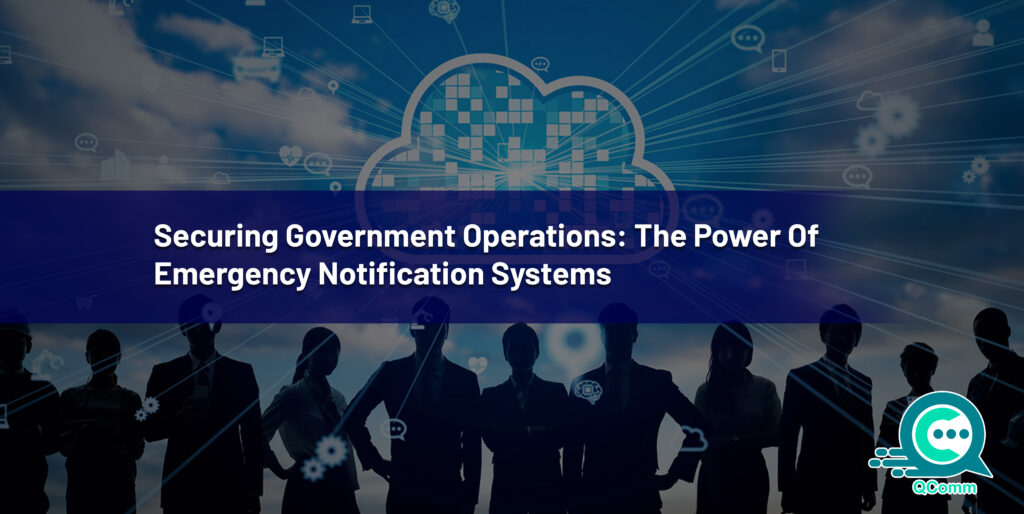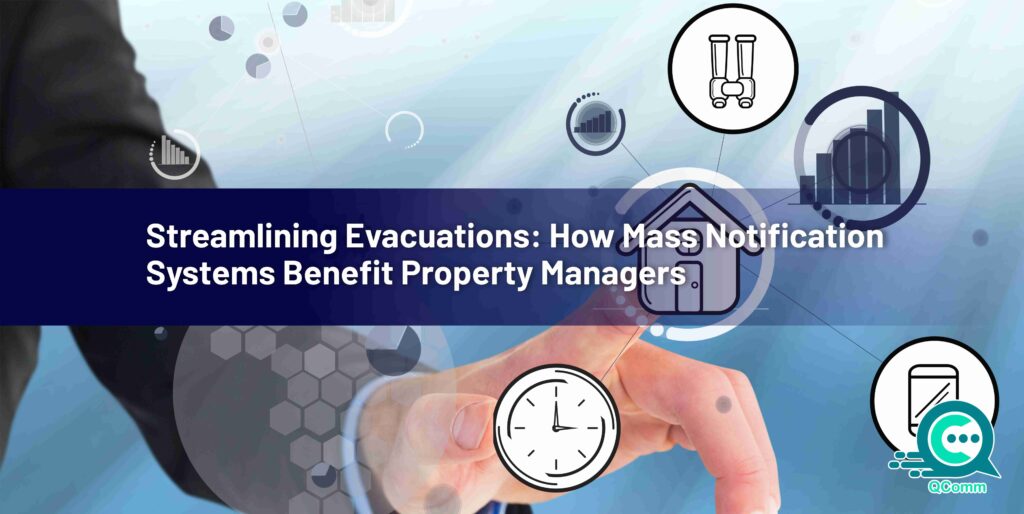
Disasters come in all shapes and sizes. From natural disasters like hurricanes and earthquakes to technological breakdowns and cyberattacks, unexpected events can cripple a business’s ability to operate.
In the aftermath, the ability to communicate effectively becomes paramount. Without a plan, businesses risk losing valuable time and jeopardizing employee safety, customer relationships, and ultimately, their chances of recovery.
The good news?
By proactively implementing a plan that incorporates alternative communication systems, businesses can ensure they remain connected and operational even in the face of unforeseen challenges.
Keep reading to explore leven such systems, along with the crucial role an Emergency Notification System (ENS) plays in tying them together for a comprehensive communication strategy.
Importance of Alternative Communication Systems for Businesses
Disasters come in many forms – natural disasters, technological failures, and even civil unrest. While we can’t predict every eventuality, we can be prepared for the disruption they cause.
Here’s how alternative communication systems can aid your business during a crisis:
→ Maintaining Business Continuity
Communication is the lifeblood of any organization. Alternative systems ensure you can stay connected with employees, partners, and customers, allowing critical operations such as order fulfillment or customer service to continue even when traditional channels are down.
→ Improved Crisis Response
Rapid and clear communication is essential during a crisis. With alternative systems in place, you can disseminate vital information and instructions to employees and stakeholders quickly, facilitating a more effective response.
→ Enhanced Employee Safety
During a disaster, the well-being of your employees is paramount. Alternative communication systems allow you to check on their safety, provide updates on the situation, and coordinate emergency response efforts.
→ Maintaining Customer Confidence
Clear and timely communication with customers during a crisis builds trust and demonstrates your commitment to their needs. Alternative systems allow you to keep customers informed about operational changes and estimated recovery times.
Use Of Alternative Communications During A Disaster
A well-diversified plan for alternative communication should incorporate a variety of methods, each with its own strengths and considerations. Here’s a closer look at 11 options to consider:
- Radio Communications
Two-way radios (walkie-talkies) and Citizen Band (CB) radios offer a reliable way to communicate over short distances, especially useful for local coordination and rescue efforts. No reliance on infrastructure makes them ideal for disaster situations, though range limitations exist.
- Text/SMS Message
Simple and widely adopted, SMS messaging offers a high likelihood of reaching a large audience. Emergency SMS alerts are quick to send and receive, even in areas with spotty cellular service. However, SMS messages can be limited in character count and may incur additional charges during peak usage times.
- Satellite Internet
While traditional internet service may be unavailable, satellite internet provides a reliable connection, especially for businesses in remote locations. The cost can be higher than traditional options and may require specialized equipment.
- Electronic And Digital Signage
Digital displays in your workplace can be used to broadcast critical information to employees on-site. They are particularly useful for visual updates and instructions, though they won’t reach employees who are not physically present.
- Mobile Applications
Many businesses utilize custom mobile apps for communication. These apps can be leveraged to send push notifications and updates directly to employees’ smartphones, bypassing potential disruptions to the cellular network. However, employees will still need a data connection to receive the messages.
- Internal Communication Platforms
Many organizations have internal communication systems like Slack or Microsoft Teams. These can be valuable tools for team collaboration and information sharing during a crisis, assuming the underlying network infrastructure remains functional.
- Social Media
Social media platforms like Twitter or Facebook can be used to broadcast updates to a wider audience, including customers and the general public. However, accuracy and timeliness are crucial on social media, and it may be difficult to distinguish your messages from the inflow of information during a crisis.
- VSAT
VSAT (Very Small Aperture Terminal) technology utilizes satellites to provide high-bandwidth internet connectivity. It’s a reliable option for businesses that require uninterrupted data transmission during a disaster. However, VSAT systems can be expensive to install and maintain.
- Off-Grid Voice Communications
While traditional landlines may be down, some alternative voice communication options exist. These include mesh networks and satellite phones. Mesh networks are decentralized communication systems that can relay messages between devices without relying on a central infrastructure. Satellite phones, while expensive, provide voice communication even in remote areas with no cellular service.
- Landline Telephone
Landlines, while increasingly uncommon, can still be a surprisingly reliable option in some disaster situations. Cell phone towers may be overloaded, but landlines may still function, especially for local calls. However, their reliability depends on the extent of physical damage to the infrastructure.
- Word-of-Mouth
In extreme circumstances, the most basic form of emergency communication – word-of-mouth – may be the only option available. This can be useful for relaying critical information to employees or customers on-site, but its reach is obviously limited.
How QComm Comes Into Picture?
Having a plethora of communication options is great, but what ties them together? This is where a robust Emergency Notification System (ENS) from a company like QComm comes into play. An ENS acts as the central nervous system of your disaster communication plan.
QComm’s ENS integrates seamlessly with various communication channels, including SMS, email, voice calls, mobile apps, and digital signage. It allows you to create pre-configured templates for emergency messages, ensuring consistency and speed during a crisis.
Here’s how QComm’s ENS can enhance your use of alternative emergency communication systems:
- Automated Emergency Alerts:
During a disaster, trigger automated emergency SMS alerts or voice messages to employees and customers based on their location and the severity of the situation.
- Targeted Communication:
Segment your audience and send targeted messages with specific instructions to different departments or customer groups.
- Real-Time Updates:
Broadcast real-time updates on the situation, recovery efforts, and estimated timelines through various communication channels.
- Two-Way Communication:
Enable two-way communication through SMS or mobile apps to receive feedback and assess employee and customer needs.
- Detailed Reporting:
Track message delivery rates and analyze communication effectiveness after the crisis to identify areas for improvement.
Real-Life Examples Of Communication In Action
- Hurricane Harvey (2017):
Home improvement giant Lowe’s utilized a multi-pronged communication approach during Hurricane Harvey. The company leveraged SMS alerts to notify employees about store closures and safety protocols. They also used social media to keep customers updated on store availability and donation efforts.
This comprehensive approach ensured employee safety and maintained customer trust during a challenging time.
- Colonial Pipeline Cyberattack (2021):
A ransomware attack crippled the Colonial Pipeline, a major fuel supplier on the East Coast.
The company quickly activated its internal communication systems, including SMS and email alerts, to keep employees informed and coordinate response efforts. They also utilized press releases and social media updates to reassure the public and manage the flow of information during the crisis.
By maintaining clear communication, Colonial Pipeline facilitated a faster recovery and minimized public disruption.
Implementing Your Communication Plan: Considerations and Best Practices
- Cost Considerations:
While SMS messaging and social media platforms are generally affordable, options like VSAT or satellite phones require a larger upfront investment. However, it’s crucial to weigh these costs against the potential losses incurred due to communication breakdowns during a disaster.
A robust communication plan can save a business thousands, even millions, of dollars in lost revenue, customer churn, and employee productivity during a crisis.
- Training and Testing:
Employees need to be trained on how to utilize various alternative communication systems during a crisis. This training should encompass understanding different communication channels, practicing message delivery procedures, and familiarizing themselves with the overall communication plan.
Regularly testing your communication plan through simulations is vital. Simulations allow you to identify and address any weaknesses before a real disaster strikes. This proactive approach ensures your communication plan functions smoothly when you need it most.
- Plan Maintenance and Updates:
Communication needs and technologies evolve over time. It’s important to regularly review and update your communication plan to ensure it remains relevant and addresses potential new threats.
This may involve incorporating new communication technologies as they emerge or adapting the plan to address changing industry regulations or business needs.
Final Words
By implementing a comprehensive communication plan that incorporates a variety of alternative communication systems and utilizes a powerful ENS like QComm’s, businesses can ensure they remain connected and operational even in the face of disaster.
Don’t wait for the unexpected to happen before taking action. Remember, preparation is key. Take the time to develop your communication plan now, so you’re ready to face any challenge that comes your way!


